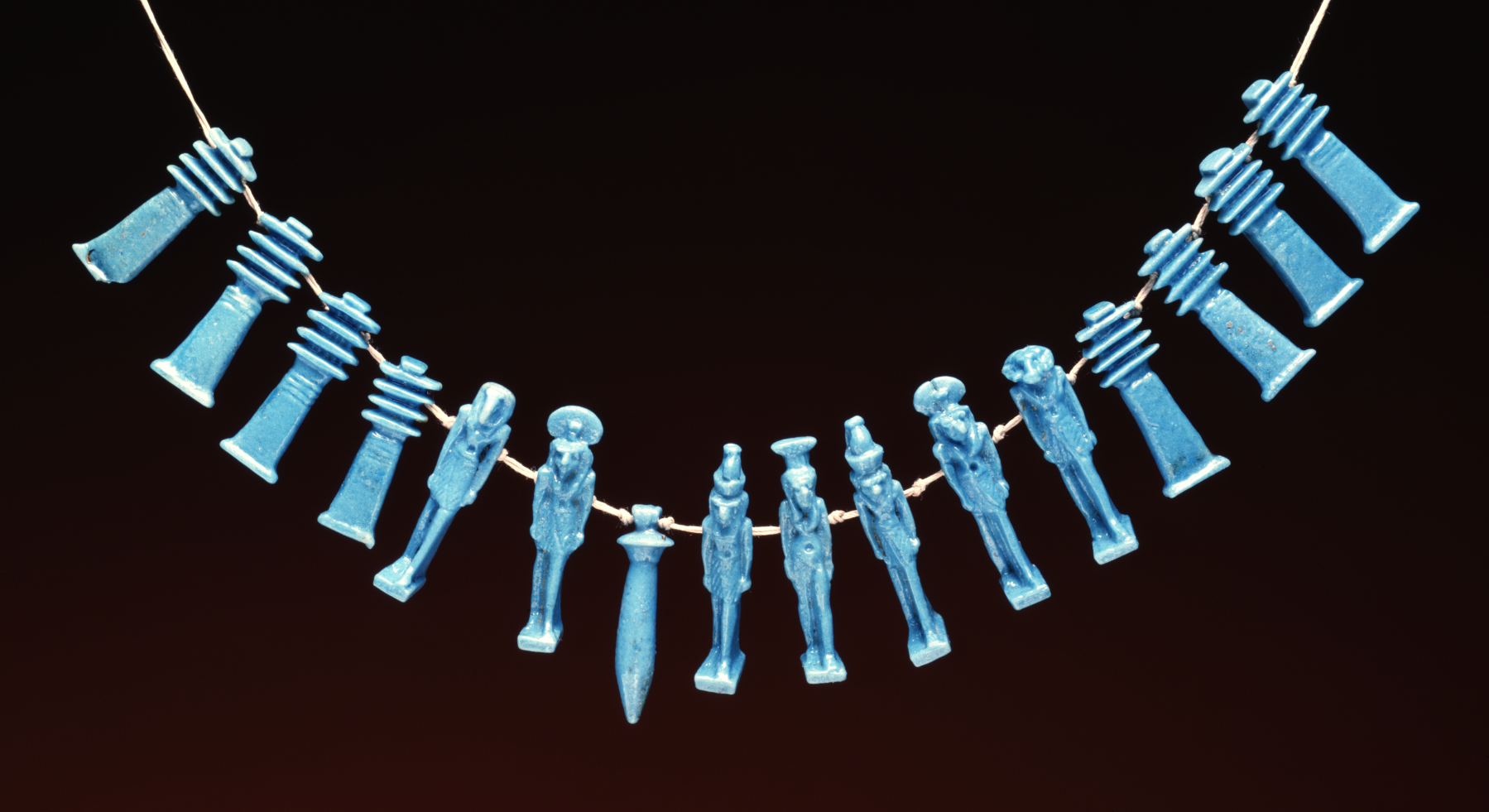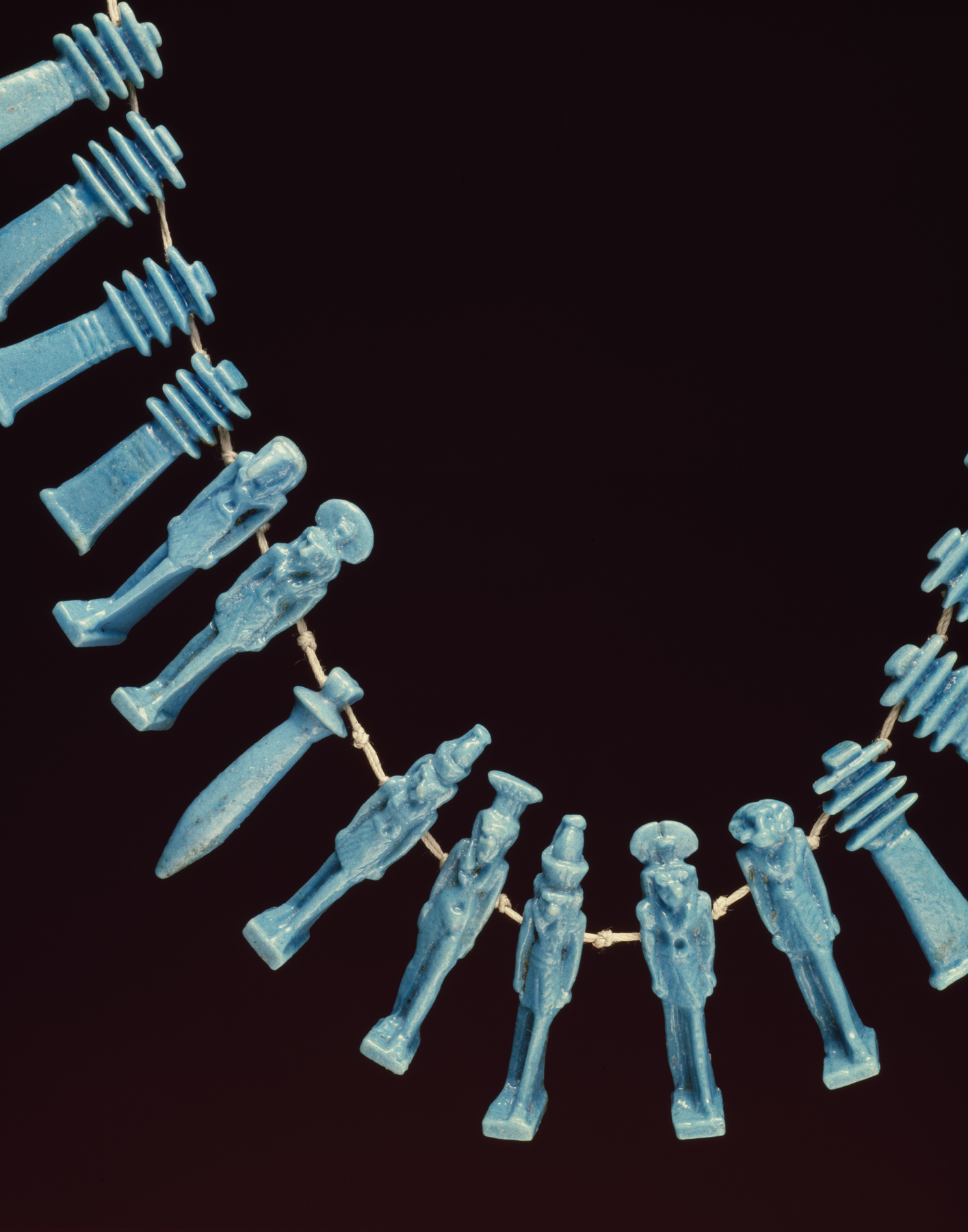Group of 16 Amulets Strung as a Necklace
(Ancient Egypt and Nubia )
This group of amulets were strung in modern times to a necklace that follows the order of an amulet necklace found on a mummy in the Faiyum. On this string are 8 "djed" pillars (symbols of Osiris), Thoth, figures of Horus, two figures of Re, a "wadj" (papyrus scepter, symbolizing resurrection), Nephthys, and Khnum. The combination of amulets without an amulet of Isis and only one "wadj" makes it likely that these amulets come from a larger context such as a mummy net or amulet ensemble of a deceased, and not from a single necklace.
Provenance
Provenance (from the French provenir, 'to come from/forth') is the chronology of the ownership, custody, or location of a historical object. Learn more about provenance at the Walters.
Henry Walters, Baltimore [date and mode of acquisition unknown]; Walters Art Museum, 1931, by bequest.
Exhibitions
| 1988 | Through Ancient Eyes: Portraiture in Ancient Egypt. Birmingham Museum of Art, Birmingham. |
| 1979-1980 | Jewelry - Ancient to Modern. The Walters Art Gallery, Baltimore. |
Geographies
Egypt (Place of Origin)
Measurements
1 3/8 in. (3.5 cm) max.
1 1/8 in. (2.9 cm) min.
Credit Line
Acquired by Henry Walters, by 1931
Location in Museum
Accession Number
In libraries, galleries, museums, and archives, an accession number is a unique identifier assigned to each object in the collection.
In libraries, galleries, museums, and archives, an accession number is a unique identifier assigned to each object in the collection.
48.1685-1699




